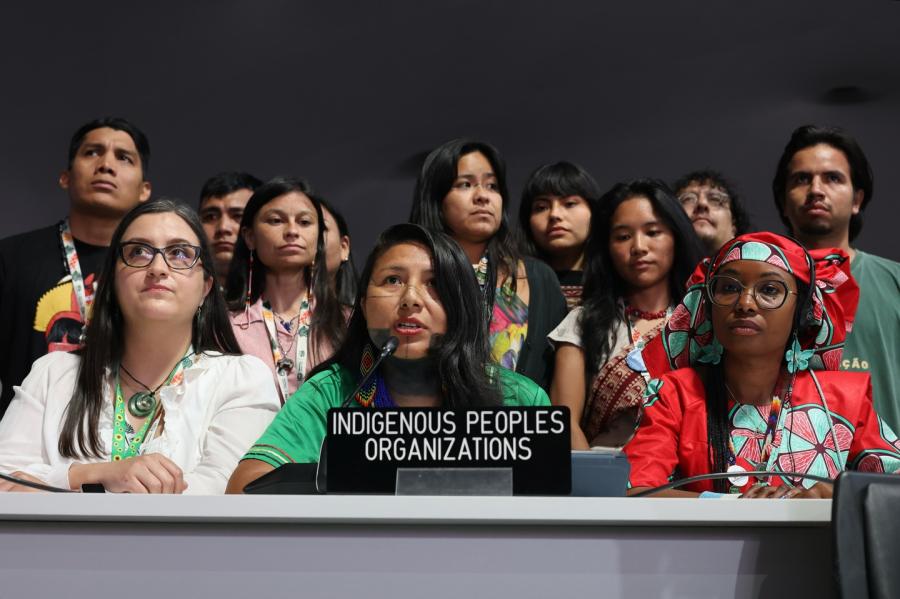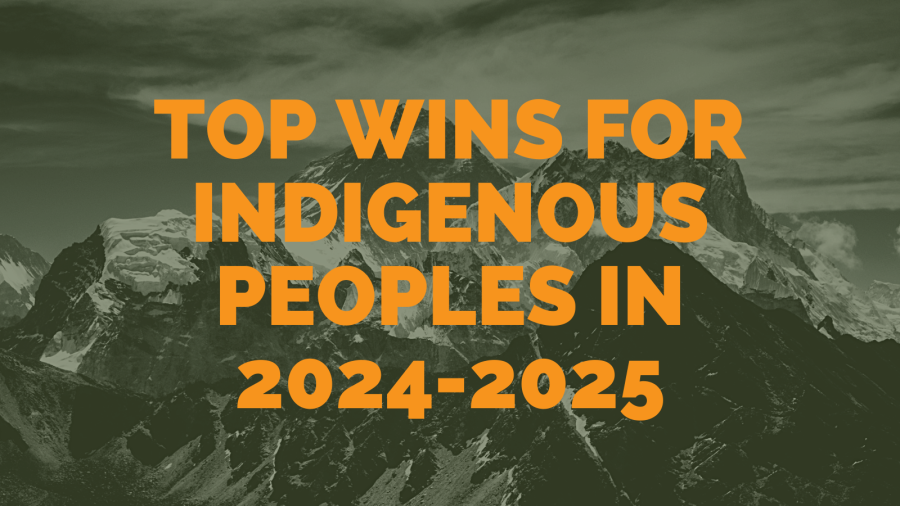
Every year on March 22, the world celebrates World Water Day, a day dedicated to promoting the importance of freshwater and raising awareness about the global water crisis. This year's theme is "Accelerating Change," which emphasizes the urgency for better water governance and management.
Water is one of the most important resources on the planet, and access to clean water is a fundamental human right. Unfortunately, many communities around the world lack access to safe and clean water. According to the United Nations, over two billion people live in coutries experiencing high water stress, and by 2050, up to 5.7 billion people could be living in areas where water is scarce for at least one month a year.
Indigenous communities are among the most affected by the water crisis. They depend on water for their livelihoods, cultural practices, and spiritual beliefs. Many Indigenous communities have a deep connection to water and view it as a sacred resource. However, they often face significant challenges in accessing safe and clean water due to historical injustices, economic marginalization, and environmental degradation, among other factors.
This World Water Day, it is important to recognize the role of Indigenous communities in protecting and conserving water resources. Indigenous Peoples have developed sophisticated water management practices over thousands of years and possess invaluable knowledge about the cultural and ecological importance of water.
Cultural Survival would like to introduce a few of our Keepers of the Earth Fund (KOEF) grant partners who are making substantial efforts in their communities to combat drought and deteriorating water quality and raise awareness about the importance of water as a vital resource and element for sustaining life.
The Katari River Environment Commission of the Quiripujo Power Plant - (Aymara), Bolivia
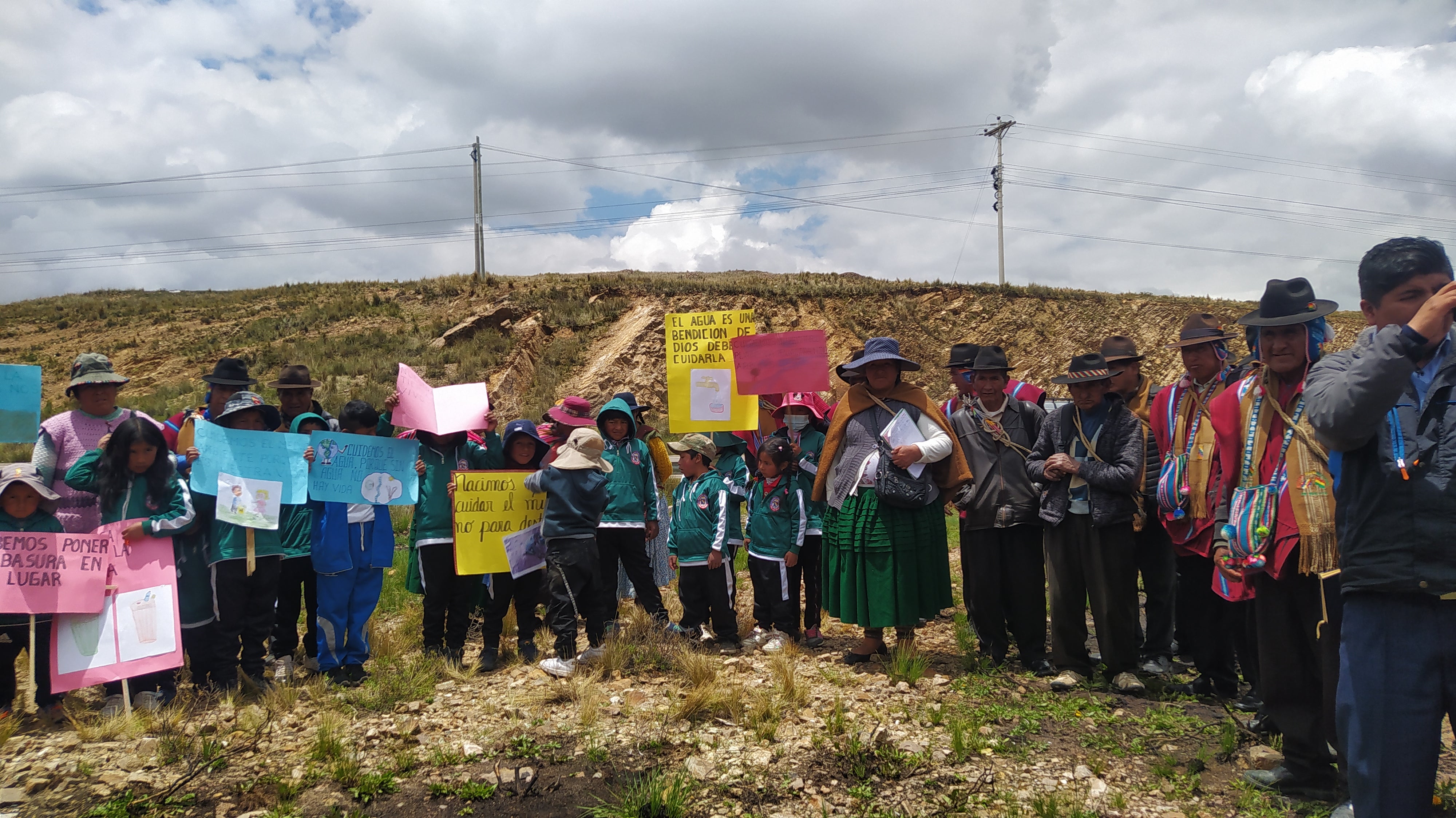
The Katari River Environment Commission of the Quiripujo Power Plant is an Indigenous-led organization working towards the restoration of Lake Titicaca in Bolivia. The Urban-Rural Intervention recognizes Lake Titicaca as an important ecosystem in the Andean region. The Katari river basin, which extends from the Andes mountains to Lake Titicaca, is the most populated basin in Bolivia, with over one million inhabitants in the nine municipalities that influence the basin. The project aims to benefit rural Aymara communities and urban Aymara neighborhood organizations in El Alto by restoring Lake Titicaca and addressing the pollution caused by urban, industrial, mining, and livestock activity that has led to the deterioration of water and soil quality in the Katari Basin. Communities in the area have experienced the negative effects of pollution, such as frequent flooding of contaminated water on crops and grazing areas.
The Urban-Rural Intervention project involves the implementation of a garbage trap on the Seque River, a main tributary of the Katari River basin, to capture waste and facilitate its recycling. Additionally, a themed public space will be designed at the location of the garbage trap with educational modules, green areas, and recreational spaces linked to the issue of Lake Titicaca's conservation. The design incorporates democratic decision-making processes for both rural and urban Aymara communities; Aymara children from nearby schools are also involved in the design process to promote environmental and cultural education. The space will include images and symbols related to waste management to promote caring for the urban environment and its impact on rural communities. This intervention will create a space to revitalize the urban Aymara population's memory of the lake's sacred character and to care for nearby waterways in the urbanized space. The design of the public space will be participatory and engage the community, including workers whose activities cause pollution.
With a Cultural Survival Keepers of the Earth Fund grant, the project, which is expected to be finished in July 2023, will finance the construction of the garbage trap. The public space will be a model for a multilevel public policy that will allow the cleaning and restoration of the lake system. Overall, the project aims to raise awareness about the critical situation of Lake Titicaca and promote urban awareness regarding its conservation.
Resguardo Inga de Blasiaku - (Inga), Colombia
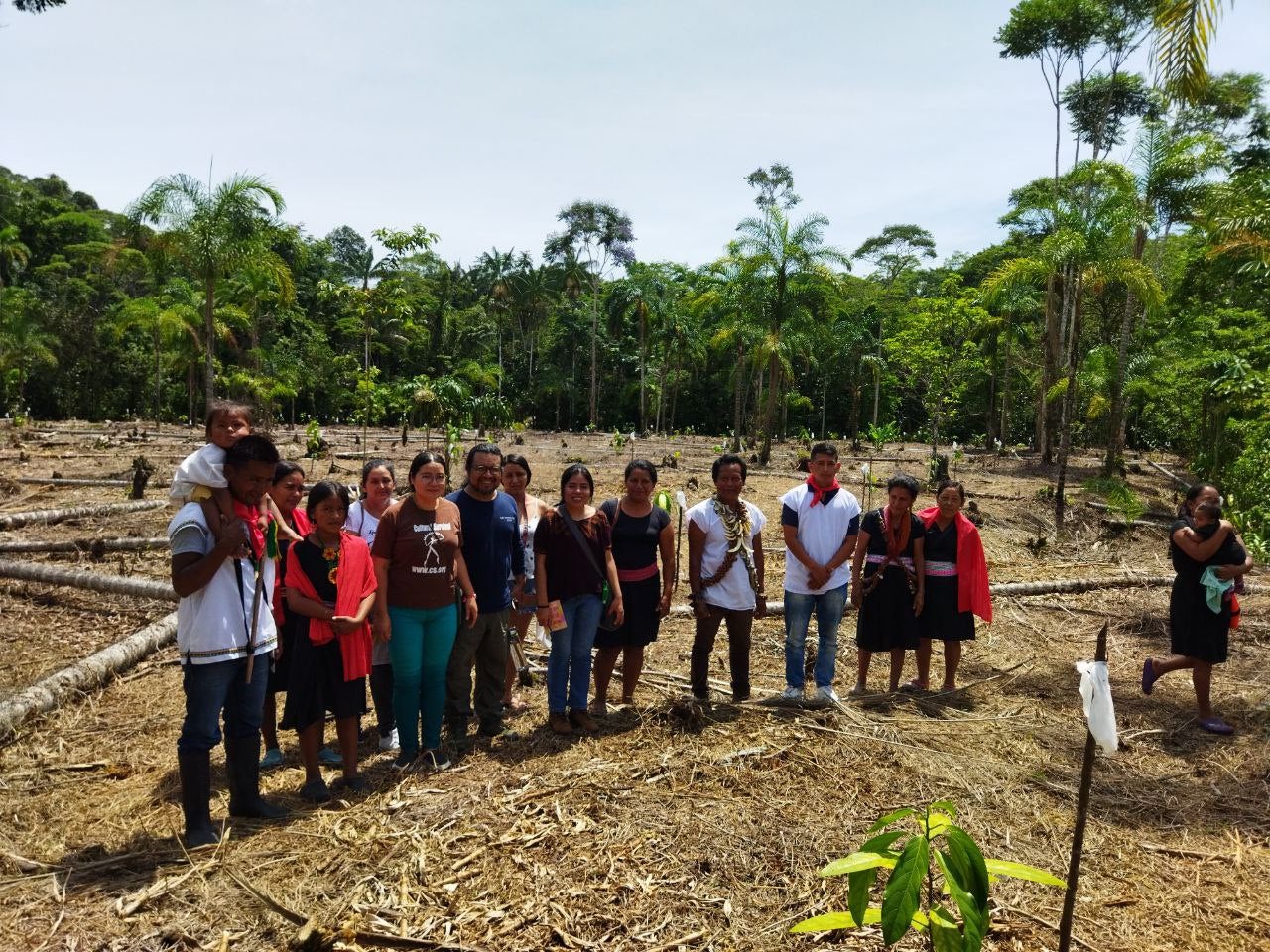
In July 2022, the Indigenous-led organization Resguardo Inga de Blasiaku developed a project to recover wetlands through the planting of canangucha seedlings. The aim of the project has been to strengthen food sovereignty and promote environmental awareness and sustainable cultural labor practices. The project draws on the knowledge and ancient practices of the Inga people, who have inherited these practices from their ancestors and continue to transmit them to younger generations. It involves planting canangucha seedlings, which are from the Inchi tree (Caryodendron orinocense), an Amazonian tree that is used for trade, medicine, and food. In addition to providing economic benefits, the Inchi tree helps to recover wetlands, maintain oxygen levels, and supports the practices of the iachas sinchis (traditional doctors), who interact with ancestral spirits in Yagé ceremonies.
Climate change has had a significant impact on the community, leading to severe floods, loss of forests, and the disappearance of important flora and fauna. The planting of canangucha seedlings is important for the community in protecting against climate change and contributing to habitat conservation. The project involves young people, who are working to ensure the sustainability of the initiative. This reflects the commitment of the community to involving younger generations in the strengthening of their cultural and environmental heritage. The project developed by Resguardo Inga de Blasiaku is a powerful example of how Indigenous knowledge and practices can be harnessed to address environmental challenges and promote sustainable development. By using the canangucha seedlings to recover wetlands, the community is not only protecting water resources, but also contributing to the conservation of important cultural and economic practices.
Comunidad Punta Chueca - (Comca’ac), Mexico
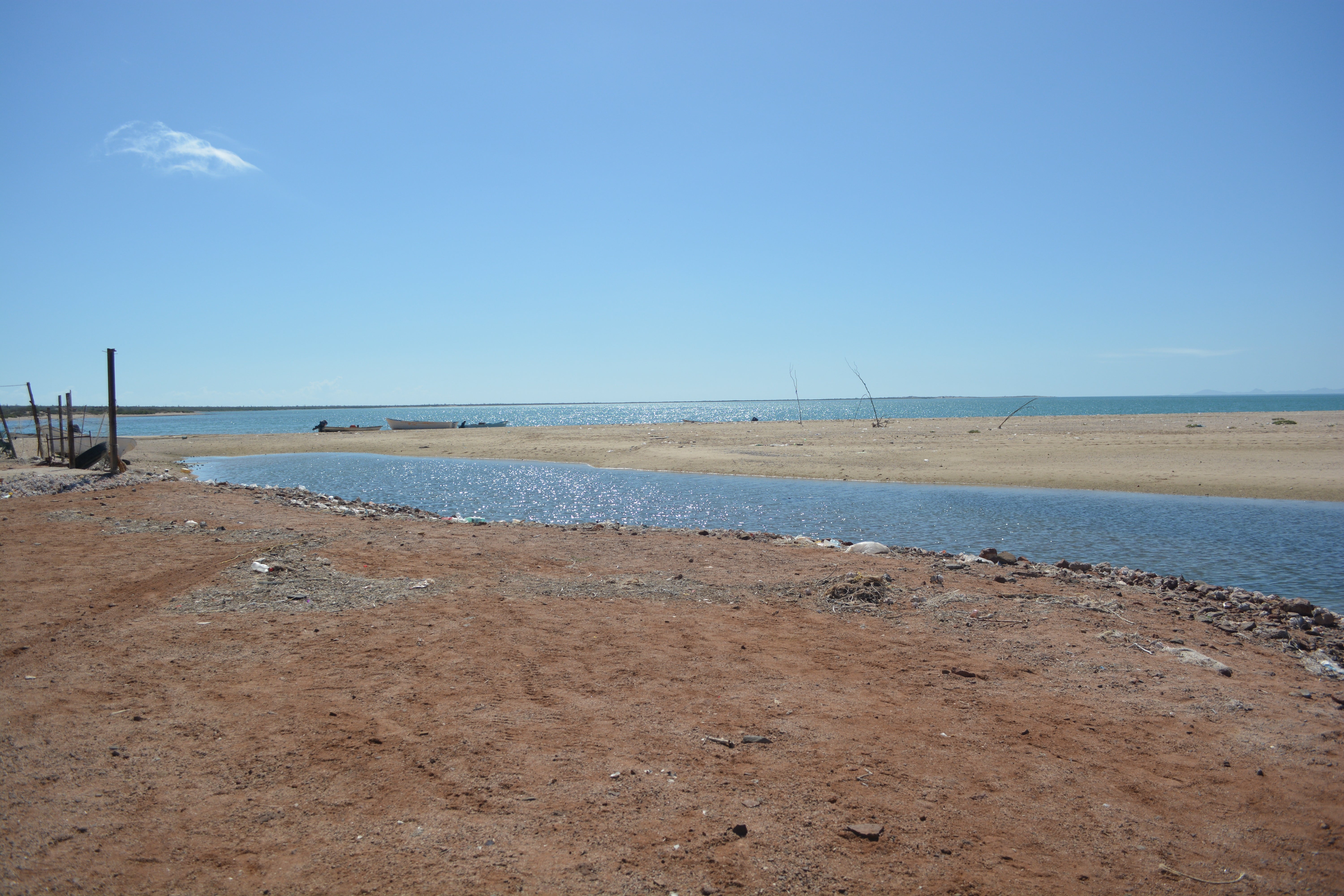
The Comca'ac Seri community in Mexico has suffered from a constant lack of water, which in turn has led to emigration. To address this, the Council of Elders of the Comca'ac Nation organized the purchase of four cisterns and the construction of bases for them in Punta Chueca. This project benefits over 1,300 Comca'ac Indigenous People who have been affected by water scarcity. The lack of water has not only impacted the health and well being of the community, but also their livelihoods. Before the pandemic, work was plentiful. But with tourists no longer coming to buy seafood, the community has suffered economically.
With support from Cultural Survival’s Keepers of the Earth Fund, the Council of Elders convenes assemblies to make decisions about the project, ensuring the community retains autonomy over the project. This project reflects Indigenous community values by addressing the critical need for water, which is essential for the survival of the community. In addition to emigration, the community is experiencing the impacts of climate change, with rising temperatures affecting their fishing industry. Prior to the installation of the water tanks, the community had to go to the purification plant in Bahía de Kino to access water, which was an expensive and unsustainable solution. The small Keepers of the Earth project helped the community to have a short-term solution for the immediate water scarcity, but communities such as Punta Chueca are a vivid example of how extreme the water crisis can be as they work to find a long-term solution.
As we celebrate World Water Day, let us remember the importance of clean water for all and support efforts to ensure access to it for everyone.
Top photo by: Vinicius Zeronian Mattoso.

